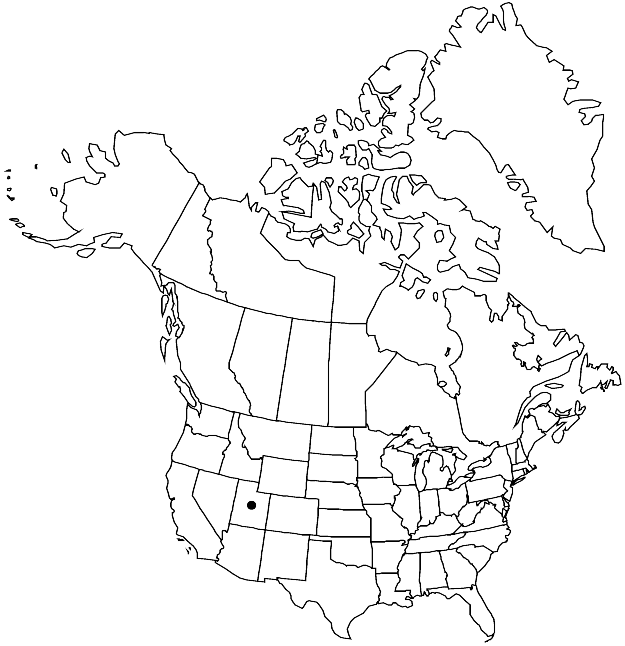Draba brachystylis
Bull. Torrey Bot. Club 29: 240. 1902.
Annuals or perennials; (short-lived); caudex often simple (poorly developed); not scapose. Stems unbranched or branched, 0.6–3 (–3.7) dm, pubescent throughout, trichomes simple, 0.4–0.9 mm, and 2–4-rayed, 0.05–0.4 mm. Basal leaves rosulate; subsessile; petiole base ciliate, (trichomes simple, 0.3–0.9 mm); blade oblanceolate, 1–3.5 cm × 4–7 (–12) mm, margins entire or denticulate, surfaces pubescent, abaxially with stalked, (2–) 4-rayed trichomes, 0.1–0.5 mm, adaxially with simple trichomes, 0.2–0.6 mm, with smaller, 2–4-rayed ones. Cauline leaves (1 or) 2–6 (–8); sessile; blade lanceolate or oblanceolate to ovate, margins entire or denticulate, surfaces pubescent as basal. Racemes (5–) 10–35 (–47) -flowered, ebracteate, elongated in fruit; rachis not flexuous, pubescent as stem. Fruiting pedicels divaricate-ascending, straight or only slightly curved upward, (1.5–) 3–8 (–10) mm, pubescent throughout, trichomes simple and stalked, 2–4-rayed. Flowers: sepals ovate, 2–2.7 mm, pubescent, (trichomes simple and short-stalked, 2-rayed); petals pale-yellow (fading white), oblanceolate, 2.5–3.7 × 0.9–1.2 mm; anthers ovate, 0.2–0.3 mm. Fruits narrowly elliptic to lanceolate, plane, flattened, (7–) 10–16 (–19) × 2–3.5 mm; valves pubescent, trichomes simple, spurred, and short-stalked, 2-rayed, 0.05–0.2 (–0.3) mm; ovules 20–36 (–42) per ovary; style 0.2–0.6 (–0.8) mm. Seeds oblong, 0.9–1.3 × 0.6–0.7 mm. 2n = 44.
Phenology: Flowering Jun–Jul.
Habitat: Fir and aspen communities, moist areas on rocky slopes
Elevation: 1700-3000 m
Discussion
Of conservation concern.
Based on morphological and chromosomal data (L. Allphin and M. D. Windham, unpubl.), Draba brachystylis is hypothesized to be an allopolyploid derived through hybridization between D. albertina and D. santaquinensis. It is known to us only from Cache, Duchesne, Juab, Salt Lake, and Utah counties. C. L. Hitchcock (1941) indicated that the species grows in the Charleston Mountains of Clark County, Nevada, but we have not seen unequivocal material of it from that area.
Selected References
None.
Lower Taxa
"elongated" is not a number."thick" is not a number."dm" is not declared as a valid unit of measurement for this property."dm" is not declared as a valid unit of measurement for this property.
